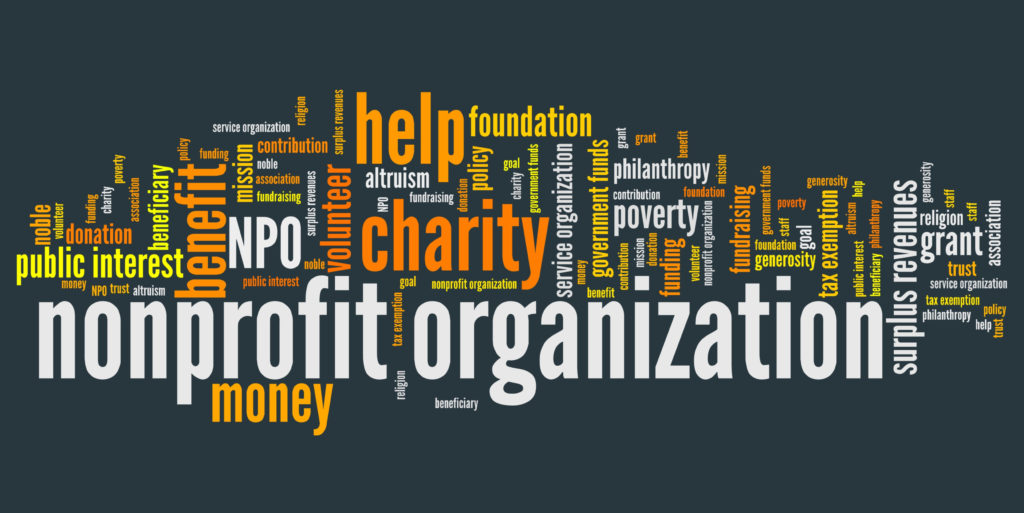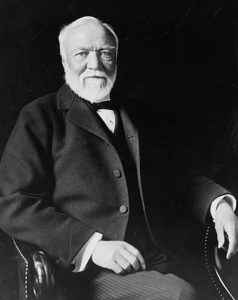Intro to Nonprofit Management: Free Online Course

Welcome to the Nonprofit Management Stack. This free online course was written to help students further expand their talent stack with an introduction to the nonprofit sector. We will cover a general overview and the foundations of nonprofits and then dive into the changes and opportunities in the field. We also look at ways to build up your nonprofit stack.
Develop your nonprofit management skills talent stack!
This free online course directs students to free articles, videos, resources, and other nonprofit programs. Each individual section offers two to three hours of learning material for your nonprofit management stack.
Following each section is an opportunity to invest in your learning. While this free online course stands alone as a great introduction to the nonprofit world, we encourage each student to consider how this information can be the starting line for students to build a solid nonprofit stack. Some should even consider other educational avenues, such as an advanced degree like an MBA.
The World of Nonprofits

What is a Nonprofit?
A nonprofit might also be referred to as a not-for-profit. It is an entity that is focused on furthering a social cause or point of view. Its guiding purpose is not to turn a profit; rather, nonprofits work toward a mission related to a particular social cause.
It’s standing as a nonprofit means that the IRS has given it tax-exempt status because it is seen to provide value in furthering a charitable, cruelty-prevention-related, educational, literary, public safety, religious, or scientific mission.
While many people immediately think of a 501(c)(3) when they hear “nonprofit,” there are 27 types of nonprofit designations, each with its own rules and regulations. While it’s dense, this publication from the IRS lays out each of these designations and what is required for approval for each.
- If you’re thinking of creating your own nonprofit, what would the designation be?
- Were there any nonprofit categories that surprised you?
Working in Nonprofits
The 2020 pandemic hit nonprofits hard. Nevertheless, the field continues to have many organizations with open roles, and new nonprofits are being established every day. From fundraising to marketing to administration to leadership roles, to name only a few, there are a plethora of ways to enter into a nonprofit career. Here are a few types of nonprofit roles to consider.
- What area are you already engaged in, or where are you planning to go when it comes to a nonprofit career?
Nonprofit roles are often not cut and dry. Wearing multiple hats is common, especially within smaller organizations. It’s also common for pay to be low, work-life balance to be off, and burnout to follow because an organization has chronically under-resourced staff who care deeply about the organization’s mission. In this article, you’ll read about how to determine if a career in the nonprofit sector is for you.
- In your reading, do you feel the pros outweigh the cons?
- How do you create a balance between your work and personal lives?
Spend some time reading these profiles of folks who work in the nonprofit sector and their experience entering the field.
- What drew them to the work they do?
- Do you see a common thread between them all?
- In what ways do you relate to their career stories?
Hope and Reality

People are drawn to nonprofit work because of the hope to make the world a more just, good, caring, and supportive place for others to thrive. That’s part of why it can be such a struggle – the best intentions don’t always lead to the desired outcomes. But that’s not to say nonprofit work is all glass half empty.
Impact Boom is a podcast dedicated to telling the stories of those in the nonprofit world making a difference. It’s a bright spot for when things feel challenging when it comes to knowing how to maximize your nonprofit’s capacity and impact.
Check out this episode with Erfan Daliri that talks about why we struggle to create the changes we need but also about the areas where there is great hope around the very same struggles. As you listen, consider how this context applies to nonprofit work.
- Where do you find hope in the midst of the daily struggle of reality in nonprofits?
Investment Opportunity
Read The Revolution Will Not Be Funded: Beyond the Nonprofit Industrial Complex. Nonprofits make up one of the largest economies in the world. There are over a million organizations that fall under the nonprofit designation. And while nonprofits can provide great good, it is important to look critically at the sector and consider the unintended consequences of these organizations.
While you might not agree with everything you read in this book, use it as an opportunity to see things through a different lens. Perhaps these perspectives lead to something positive in your nonprofit work.
Foundations of Nonprofits
Progressive Era Roots
While the idea of helping your community has been around since probably the dawn of humankind, nonprofits as we know them really developed during the Progressive Era in the United States, from about 1896 – 1916. This was a period that saw increased social activism reform in politics with the establishment of child labor laws and prohibition, as well as women’s suffrage.

It was also a period of rapidly increased wealth for many Americans, and with that new wealth, the opportunity to give it away.
If you’d like to get a better glimpse of the perspective on charity in this era, read Andrew Carnegie’s The Gospel of Wealth. First published in 1889, Carnegie argues in this essay that those with wealth have a duty to the rest of society and should therefore fulfill that duty by donating their money to various causes.
Something to bear in mind as you read Carnegie’s essay — he made his wealth off the labor of those who were the focus of his charitable efforts.
- With this in mind, considering the nonprofit world today, how do nonprofits (specifically philanthropies) benefit from the exploitation of people they are supposed to be helping?
Fathers of Fundraising
One of the mainstays of nonprofit work is fundraising. But national nonprofits with large-scale fundraising didn’t start popping up until the 1920s. The first large-scale fundraising effort in the U.S. is credited to Charles Sumner Ward and Frank L. Pierce, who were responsible for raising the money to build a new YMCA building in New York City.
The YMCA had an original goal of $350,000, and despite $50,000 from the Rockefellers, they were still woefully short. In come Sumner and Pierce. Read about their strategy and learn why they’re called the Fathers of Fundraising by some.
- What approaches are still used in nonprofit fundraising today?
- What are some of the negative consequences of this type of fundraising?
One negative that came about was that the small, local nonprofits began having a hard time raising funds since donors now had a larger national pool to choose from when it came to giving their money away.
If you’re interested in developing your ever-important nonprofit fundraising stack, check out the Fundraising Is Beautiful podcast for some practical, actionable advice.
Tax Reform Act of 1969

In 1969, the U.S. government passed the first Tax Reform Act, marking the beginning of government involvement in the nonprofit sector.
The Tax Reform Act is where we get the IRS codes like the 501(c)(3) that we read about in the first section. It stated that organizations that fit within the requirements of the 501(c)(3) designation could, among other things, offer tax exemptions for their donors, which was incentives for donors to give. This led to a massive surge in applications for the 501(c)(3) status. Thus the nonprofit sector, with all its rules and regulations, was officially born.
There were other reasons behind the Tax Reform Act of 1969 regarding the regulation of large philanthropic organizations (think Carnegie). In 2020, the Pittsburgh University School of Law released a five-article symposium on the Tax Reform Act of 1969.
- As you read this introductory essay, what are your reflections on the author’s questions regarding the impact of the act today?
The Third Sector
In 1976, the nonprofit sector gained a much louder voice in the government as Congress passed a bill that allowed them to spend up to a million dollars annually on lobbying. As a result, by the 1980s, nonprofits became the “third sector” – that is, organizations that are neither the public sector (government) nor the private sector (businesses).
If lobbying is of interest to you, build your nonprofit stack with this webinar on lobbying considerations for nonprofits.
Investment Opportunity
Read Making the Nonprofit in the United States to dig more deeply into the history of nonprofits in the U.S.
Changes in Nonprofits
There are so many changes happening in the nonprofit world, from fundraising to new technologies to volunteer engagement and beyond. There are a wide array of things a nonprofit manager needs to be aware of and consider when it comes to helping their nonprofit navigate these uncertain waters. Here are 17 nonprofit trends to think about.
- Which ones are most pertinent to you and your nonprofit context?
Moving Out of Survival Mode
When the pandemic smashed its way across the globe in 2020, nonprofits were hit hard with extensive staffing lay-offs and furloughs as giving plummeted and has, for the most part, not recovered. Large projects and events were canceled, and contingency plans abounded.
There was a deep scarcity mentality, and rightfully so, given that the industry, like everything else, had been abruptly turned on its head. But if the past year-plus has shown all of us anything, it’s that there’s no turning back. What does this look like for the nonprofit sector? This piece covered some mentality areas to focus on for nonprofits as we move into this new age. Consider the author’s perspective on the impact of upheaval on the sector.
- What positive, forward-thinking changes has the pandemic brought about?
Check out the most recent study from Independent Sector on the health of nonprofits.
- What surprised you?
- What do you find most relevant?
Future of Fundraising

The fundraisers of nonprofits were certainly not immune to the changes of 2020 and 2021. Many of the changes that came about for the sector as a whole directly impact how fundraising works.
As we discussed in the last section, some of the changes we’ve seen in nonprofits are going to be sticking around, which is true for how nonprofits fundraise also.
- What changes do you think will continue on the fundraising front?
Here are five that you might want to consider.
- In what ways do they add value or ease when it comes to nonprofit fundraising?
- What new challenges do they pose?
If fundraising is part of your talent stack you want to build on, check out this annual report on the state of modern fundraising.
Diversity, Equity, Inclusion
Much of the commonly told history of the nonprofit world in the U.S. tends to be of white-led organizations, including our small exploration in the second section of this course. But the Black nonprofit community, both in the U.S. and Canada, has a rich history as well.
As conversations and initiatives around DEI become more common across nonprofits, this history should be more readily told and understood. At the moment, however, the nonprofit sector in the U.S. remains rather lacking in diversity, never mind equity or inclusion.
As you read this piece from the Association of Fundraising Professionals, consider how the changes from the global pandemic can work with DEI initiatives to bring about opportunities within the sector.
There are a ton of DEI resources out there for nonprofits. If this is a part of your talent stack that you’re interested in developing, check out these resources from the Nonprofit Learning Lab.
Investment Opportunity
Consider joining the Association of Fundraising Professionals. Offering webinars, training, courses, certifications, career help, and networking opportunities, becoming a member can help you build your nonprofit fundraising stack and bring even greater value to your organization.
Opportunities in Nonprofits
Capacity Building

Capacity building is an ongoing endeavor of continual improvement that allows a nonprofit to fulfill its mission in the future. This can look like adding staff, acquiring a new location, adding new streams of revenue, and expanding programs, as a few examples. Here are four nonprofit capacity-building strategies.
- In your nonprofit context, which of these might be the most beneficial strategy to implement?
You can utilize this resource list to help you determine which strategy works best for your nonprofit (or maybe it’s a completely different strategy or a hybrid – don’t be afraid to think broadly).
Capacity-building efforts should always start with and be followed by an evaluation of said capacity-building so you can determine if your work was successful in helping your nonprofit better fulfill its mission.
- Create an evaluation plan for the capacity-building strategy. How will you know if your strategy was effective?
At the end of this article, you’ll find both a guide for capacity-building assessment tools and a database of what’s available to help guide you.
One of the ways nonprofits can consider capacity building is in the digital arena. This has been a space of opportunity for nonprofits for quite a while now, but the necessity of growth in the digital realm came to the forefront in 2020. And while many nonprofits implemented digital capacity-building efforts in that time, it’s important to also evaluate those efforts to ensure they are meeting the organization’s missional needs.
Check out this webinar on digital capacity building.
- Did it shed any light on what to consider or evaluate when it comes to the digital landscape of your nonprofit context?
Advocacy and Politics in the Nonprofit Context
While nonprofits have limits on the political involvement they can take, many (or you could argue all) nonprofits have missions that are political since they are often working to address systemic lacks. There are still many opportunities for nonprofits to engage in politics and advocacy beyond activities like lobbying, though. Watch this forum on nonprofit advocacy from The Columbus Foundation.
- From what they discussed, in what ways could a nonprofit engage in advocacy on behalf of its mission?
- What considerations are needed to engage in these activities legally?
To take a different path on this subject, the politicization of nonprofits has been a topic of conversation recently, with bills, riders, and amendments seeking to weaken or repeal the Johnson Amendment, which prohibits nonprofits from endorsing political candidates. You can read more about the Johnson Amendment here.
- Is this a conversation that’s come up for the nonprofits you are familiar with?
- What is your take on this type of political action?
The Council for Nonprofits decries these attempts at weakening the Johnson Amendment. Spend some time reading up on the resources they provide for context.
- What do you feel the role of the nonprofit should be when it comes to political activity and advocacy?
Ethically Telling Good Stories

One of the greatest opportunities a nonprofit can have is to tell a good story. Good stories are what help bring people to your cause. It’s what attracts and retains donors, volunteers, and staff, but telling a good story and telling a story ethically are not necessarily the same.
Considering many nonprofits are working for, and alongside disenfranchised groups of people, the ethical nature of how the nonprofit’s work and mission are presented is often problematic.
Ethical Storytelling has a ton of great resources to explore when it comes to this topic. In particular, listen to their Storytelling 101 Webinar.
- In what ways might your nonprofit consider reframing how it tells stories with this ethical lens?
Investment Opportunity
Take an online nonprofit course with Coursera. Design Thinking for the Greater Good through the University of Virginia is an eight-hour, beginner-level course that will teach you about design thinking. This is a human-centered approach to problem-solving that can be used when thinking about capacity building.
This course will help you understand a problem, create ideas to try, and think through how to determine which of your ideas will produce the desired outcomes.
Nonprofit Talent Stack
Get Comfortable with Marketing…
In the nonprofit world, you’ll often be wearing multiple hats. So while you may not focus on the marketing side of things, it is always good to have at least a small marketing stack when it comes to your nonprofit career. Especially if you work at a smaller nonprofit or are one of the organization’s leaders, chances are you’ll have a hand in your marketing plan.
And nonprofit marketers have a lot to navigate. They need to understand their donors, tell engaging stories, understand how successful fundraising works, target new supporters, focus on current ones and stay up to date on the latest marketing trends.
Here’s a quick webinar that offers some strategies to create a nonprofit marketing plan when resources are tight, from time to finances to person-power.
- What can you take away from these strategies for your nonprofit context?
…and Fundraising
Fundraising, for better or worse, is the lifeblood of the majority of nonprofits. So regardless of your role within your organization, you’re going to need to have built some understanding of fundraising into your nonprofit stack. But what does it take to be a good fundraiser?
This article shines some light on qualities you’ll want to develop and own if you’re going to succeed in this realm.
- Where do you feel your strengths lie when it comes to fundraising?
- If this is an area you feel less comfortable with, was there anything from the article that gave you some encouragement?
Understand the Board

Most nonprofits are overseen by a board of trustees. Nonprofit boards are incredibly important, serving as the fiduciaries of the organization. And for the incredible amount of responsibility they have, most board members serve in a volunteer capacity.
It’s important to understand the role of a nonprofit board and what its responsibilities entail. Before you read this article, consider what you already know about nonprofit boards.
- After reading, how accurate were you?
- What’s your perspective on the role of the board?
Boards can face challenges, and it’s important that everyone serving on a board is fully engaged with the mission of the nonprofit. It’s not a given that your board is effective. But here’s a toolkit that will help you create one that is.
- Given your nonprofit context, what considerations do you need to make regarding your board?
Don’t Burn Out
In the very first section of this course, we read about how those who are successful in their nonprofit careers aren’t necessarily the ones who care the most. Rather, they are the ones who are able to create balance. And for those who can’t, burnout often follows.
It’s common for nonprofit staff facing chronic shortfalls in personnel, finances, and other resources to be overworked and underpaid. It’s an unfortunate reality for many. And even for those nonprofits that are operating in the black and working toward caring well for their staff, burnout is still a reality. This is especially true given the increased pressure everyone has faced over the past year or so.
If burnout is something you’re worried about, or even if you just want to keep tabs on how you’re doing in regard to your mental health at work, take this burnout assessment.
- How did you score?
If it’s something you’re concerned about, read this interview with some nonprofit experts on tips to prevent burnout.
Investment Opportunity
The Nonprofit Marketing Guide is a fantastic source for all things, well, nonprofit marketing-related. Sign up for their free or premium membership for webinars, courses, guided professional development, trend reports, templates, worksheets, and more.
What are the biggest challenges facing nonprofit organizations today?
- Funding: Finding sustainable and reliable sources of income is one of the biggest challenges facing nonprofits today. As the economy continues to struggle, many nonprofits have fewer funding sources and less money to go around.
- Measuring Impact: As nonprofits increasingly shift towards evidence-based approaches to programming, measuring impact has become a critical challenge. Many nonprofits lack the tools and resources to accurately measure the impact of their programs and initiatives.
- Attracting and Retaining Talent: Nonprofits often compete with the corporate sector for talented professionals, making it challenging to attract and retain top talent. In addition, the pay and benefits offered by many nonprofits are often not competitive with those provided by the private sector.
- Increasing Competition: With more and more organizations entering the nonprofit space, competition for funding and attention is intense. Nonprofits must stay competitive to stand out among their peers.
- Adapting to Change: Nonprofits must be able to quickly adapt to changes in the economic, political, and social environment. As the world continues to evolve, nonprofits must be able to stay ahead of the curve.
To Wrap Things Up:
- You’ve done it! This is the conclusion of the free online course to help you develop your nonprofit stack. May it give you a great foundation to build upon!
- Nonprofit organizations are the backbone of many relevant services offered to the community.
- To become an integral part of helping others, pursue a nonprofit management program to gain the skills needed to excel.
- A nonprofit management graduate certificate will help you get the job promotion you deserve. Nonprofit management programs are readily available.
- A nonprofit professional should be proficient in organizational growth, strategic planning, managing capital campaigns, how to build relationships, and public policy.
- Working professionals in the field of nonprofit management often will include nonprofit financial management, as an organization’s cash flow and investments are of utmost importance for success.
Written by: Tammie Cagle
Before you go, see the following:
- The Best MBA in Entrepreneurship Degree Programs
- The Best MBA in Finance Degree Programs
- The Best MBA in Accounting Management Degree Programs